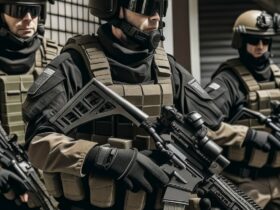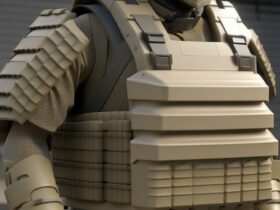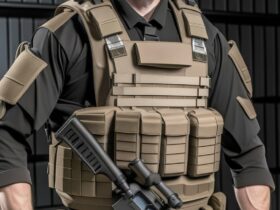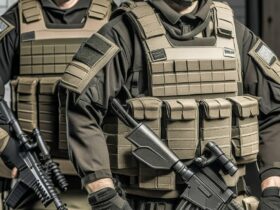In the ever-evolving world of counterterrorism operations, one critical component that cannot be overlooked is tactical armor. Tactical armor plays a crucial role in protecting law enforcement and military personnel from the myriad of threats they face when combating terrorism. From improvised explosive devices (IEDs) to sniper attacks, tactical armor is designed to provide maximum protection while still allowing for mobility and flexibility in high-stress situations.
One of the most common threats faced by counterterrorism personnel is the possibility of encountering an IED. These devices can be hidden in vehicles, buildings, or even on the person of a terrorist, making them extremely difficult to detect. Tactical armor, specifically ballistic vests and helmets, are designed to protect against the shrapnel and blast effects of an explosion, significantly increasing the chances of survival for those wearing the equipment.
Sniper attacks are another common tactic employed by terrorists, especially in urban environments. Tactical armor, specifically plate carriers and ballistic plates, can provide protection against high-velocity rifle rounds, giving personnel a fighting chance in the event of an ambush. Additionally, tactical armor can be customized with additional accessories such as rifle plates, trauma pads, and hydration systems to enhance both protection and performance.
In addition to protection against physical threats, tactical armor can also provide protection against chemical, biological, radiological, and nuclear (CBRN) threats. Many tactical armor systems are designed to integrate with CBRN suits and respirators, providing a comprehensive defense against a wide range of threats. This level of versatility is crucial in the dynamic and unpredictable world of counterterrorism operations.
Furthermore, tactical armor is designed with the needs of the modern warrior in mind. Lightweight materials such as Kevlar and ceramic plates ensure that personnel can move quickly and efficiently without sacrificing protection. Additionally, ergonomic designs and adjustable straps ensure a comfortable fit for prolonged missions, allowing personnel to focus on the task at hand without being hindered by their equipment.
In conclusion, tactical armor is a critical component in counterterrorism operations. By providing protection against a wide range of threats, including IEDs, sniper attacks, and CBRN threats, tactical armor ensures the safety and effectiveness of law enforcement and military personnel in the fight against terrorism. With constant advancements in material science and design technology, tactical armor will continue to evolve and adapt to the ever-changing threats faced by counterterrorism personnel around the world.







Leave a Reply